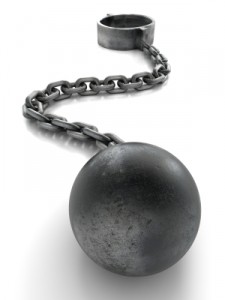 Before filing an adversary proceeding to strip a lien, it is important to understand the limitations on lien stripping and how it affects other aspects of the case. First, stripping the lien does not make the debt disappear. The debt simply becomes unsecured, and is paid (or not paid) along with the other unsecured creditors. If the debtor has substantial disposable income, and is paying all of his unsecured creditors in the plan, then lien stripping might be a very bad idea. The second mortgage might have a repayment term of ten or fifteen years. However, once stripped the debt might be paid back in full during the duration of the plan, which is typically five years. This could cause the plan payment to skyrocket creating a cash-flow issue for the debtors. Whether this is an issue depends on the debtor’s disposable income and the size of the claim. But debtors will not have to pay the debt outside the Chapter 13 plan.
Before filing an adversary proceeding to strip a lien, it is important to understand the limitations on lien stripping and how it affects other aspects of the case. First, stripping the lien does not make the debt disappear. The debt simply becomes unsecured, and is paid (or not paid) along with the other unsecured creditors. If the debtor has substantial disposable income, and is paying all of his unsecured creditors in the plan, then lien stripping might be a very bad idea. The second mortgage might have a repayment term of ten or fifteen years. However, once stripped the debt might be paid back in full during the duration of the plan, which is typically five years. This could cause the plan payment to skyrocket creating a cash-flow issue for the debtors. Whether this is an issue depends on the debtor’s disposable income and the size of the claim. But debtors will not have to pay the debt outside the Chapter 13 plan.
Stripping a lien in a Chapter 13 bankruptcy case only makes the second mortgage go away when the case is finished and the debtor receives a discharge. If the case is dismissed early for some reason then the lien stays attached to the home. Lien stripping in bankruptcy cases filed in Texas are limited to Chapter 13 proceedings. At this time you cannot strip a lien in a Chapter 7 case. This means that if a case is converted to Chapter 7 after stripping the lien, the lien will not be removed from the property after discharge. My practice is limited to Texas, but I have read that junior liens can be removed in Chapter 7 cases filed in Alabama, Florida, and Georgia, but debtors in those states should speak with a local bankruptcy attorney for more details. The ability to lien strip in these states is the result of a recent case decided in the 11th Circuit.